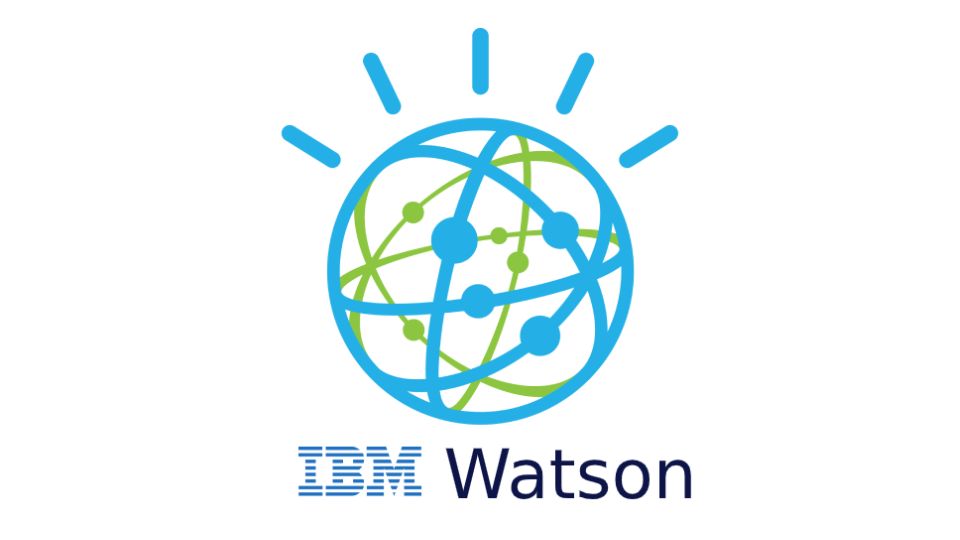Which AI Video Editing Software Best Suits Your Creative Needs

In the ever-evolving landscape of video content creation, the fusion of artificial intelligence and editing software is nothing short of a revolution. As a content creator, have you ever found yourself wondering how AI can transform your video production process? Or perhaps, you're on the hunt for the ultimate tool that can elevate your YouTube channel to new heights with minimal effort? Look no further, as we embark on a journey through the crème de la crème of AI YouTube video editors. From the cutting-edge DeepBrain AI's AI Studios to the prowess of OpenAI's GPT-3, we'll dissect the features, affordability, and user support of these technological marvels. But what sets these tools apart in a market saturated with options, and how can they redefine the way we think about video editing?
In this comprehensive guide, we dive deep into the capabilities of various AI editing software, examining how they can streamline your creative process, whether you're a novice vlogger or a professional filmmaker. We'll explore DeepBrain AI and their AI Studios, a game-changer in the industry, and compare it against other giants like TensorFlow, IBM Watson, and Amazon Web Services (AWS) AI. Each of these platforms promises to enhance your video editing experience, but which one will fulfill your specific needs? Could the integration of AI be the missing piece in your content creation puzzle?
1. DeepBrain AI and AI Studios
DeepBrain AI has made a significant mark in the AI world with its AI Studios product.
Pros:
- Revolutionizing YouTube Content with AI-Driven Innovation: DeepBrain AI's Studios platform is at the forefront of revolutionizing YouTube content creation with its hyper-realistic AI avatars. These avatars are a game-changer, boasting a staggering 96.5% similarity to real humans, complete with full body gestures and natural movements made possible through cutting-edge frame interpolation and gesture keyframing technology. These avatars aren't just a visual spectacle; they're designed to meet the dynamic needs of YouTube video production, serving as virtual hosts or presenters that bring a new level of professionalism and engagement to the platform. This is particularly advantageous for channels that employ automated ChatGPT features, as it allows for a more interactive and immersive viewer experience.
- Unparalleled Customization for Brand Consistency: The customization capabilities of AI Studios are unmatched, offering content creators the tools to fine-tune their AI avatars to align seamlessly with their brand identity. This attention to detail is crucial for maintaining a unique and recognizable presence on YouTube, fostering a loyal subscriber base. Whether it's the avatar's appearance, voice, or mannerisms, creators can design their virtual personas to reflect the essence of their brand, thereby enhancing viewer recognition and connection.
- Intuitive Interface and High-Speed Performance: AI Studios prides itself on an intuitive, user-friendly interface that allows creators of all technical backgrounds to easily integrate sophisticated AI features into their YouTube videos. The platform's emphasis on fast and low-latency performance, including streaming inference and distributed GPU support, ensures that videos are produced with minimal delay. This rapid turnaround is essential for keeping pace with the ever-increasing demand for fresh and timely online content.
Cons:
- Resource Requirements for Advanced Features: While AI Studios offers cutting-edge technology, the advanced features such as real-time AI avatar conversation and high-resolution output may necessitate robust hardware. This could pose a challenge for creators who do not have access to high-performance computing resources.
- Navigating the Complexity of Real-Time Interactions: The real-time conversational capabilities of AI Studios' avatars, essential for automated ChatGPT features, represent a significant leap forward in user interaction. However, effectively implementing these features in a YouTube setting may require a deeper understanding of conversational AI and machine learning, which could be a steep learning curve for some users. Nonetheless, for those in sectors like finance, education, automotive, retail, and healthcare, mastering this technology can position them as market leaders, capitalizing on the unique benefits of real-time synthetic avatars.
Additional Considerations:
- Flexible Pricing: AI Studios offers a variety of pricing plans to suit different budgets and needs, from basic packages for newcomers to advanced options for professional-grade content.
- Supportive User Resources: DeepBrain AI provides robust user support, including documentation, tutorials, and customer service, to help users navigate the complexities of AI technology and maximize the platform's capabilities.
2. OpenAI's GPT-3
OpenAI's GPT-3 is a state-of-the-art language processing AI tool.

Pros:
- Versatility: GPT-3's ability to produce text that closely mimics human writing is nothing short of remarkable. This versatility allows it to be used for a wide range of applications, from crafting compelling narratives and creating content for social media posts to generating code and assisting with language translation. Its adaptability makes it a powerful tool for developers, content creators, and researchers who require nuanced language generation.
- Ease of Integration: One of the standout features of GPT-3 is the ease with which it can be integrated into existing systems. OpenAI provides robust APIs that facilitate seamless incorporation into various software applications. This means that businesses and developers can leverage GPT-3's capabilities without the need for extensive machine learning expertise, significantly lowering the barrier to entry for utilizing advanced AI in practical applications.
- Large Knowledge Base: Trained on a diverse and extensive dataset, GPT-3 has a broad understanding of numerous subjects, ranging from the sciences to the arts. This extensive knowledge base enables GPT-3 to provide informed and contextually relevant responses in a multitude of scenarios. Whether you are looking for insights on historical events, technical explanations, or creative storytelling, GPT-3 can generate content that is both informative and engaging.
Cons:
- Cost: While GPT-3's capabilities are impressive, they come at a price. Access to the GPT-3 API is provided on a tiered pricing model, which can become a significant expense for applications with high-volume or commercial usage. This cost factor can be a barrier for small businesses, independent developers, and startups that are operating on a tight budget.
- Unpredictable Outputs: Despite its advanced nature, GPT-3 is not infallible. There are occasions when the content generated may be off-topic, nonsensical, or even inappropriate. This unpredictability means that human oversight is often necessary to ensure that the outputs meet the desired quality and relevance. Implementing safeguards and monitoring the generated content is essential to mitigate these risks and maintain the integrity of the applications using GPT-3.
3. TensorFlow
TensorFlow, developed by Google, is a popular open-source AI tool for machine learning and deep learning projects.

Pros:
- Flexibility and Ease of Use: TensorFlow offers an exceptional degree of flexibility, making it a suitable choice for both novices and seasoned AI practitioners. For beginners, TensorFlow provides high-level APIs, which simplify the process of model creation and deployment. For experts, the platform allows for intricate customization and optimization, enabling the development of cutting-edge models with high efficiency.
- Strong Community Support: One of the most significant advantages of TensorFlow is its robust community. As an open-source platform, it benefits from contributions from thousands of developers and researchers worldwide. This collective effort ensures continuous improvement, a wealth of shared knowledge, and extensive documentation, making problem-solving and collaboration more efficient.
- Scalability: TensorFlow is engineered to excel in large-scale machine learning projects. It can easily handle extensive computations and is capable of distributing the processing across multiple CPUs or GPUs. This makes it an ideal choice for businesses and researchers working with vast datasets and complex algorithms.
Cons:
- Learning Curve: Despite its flexibility, TensorFlow can present a challenging learning curve for beginners. The comprehensive nature of the platform means that new users must invest time to understand its intricacies and the underlying principles of machine learning and deep learning.
- Resource Intensive: TensorFlow's ability to handle complex models comes at a cost. It requires significant computational resources, particularly for training sophisticated deep learning models. This can be a barrier for individuals or organizations with limited access to high-performance computing systems.
Additional Features and Information:
Beyond these pros and cons, TensorFlow is continuously evolving, with features that keep it at the forefront of AI development. It supports a range of tasks from simple regressions to complex neural networks. TensorFlow 2.x, the latest major release, focuses on simplicity and ease of use, with updates like eager execution by default, and a more intuitive higher-level API.
TensorFlow also integrates with TensorFlow Extended (TFX) for end-to-end machine learning pipelines, and TensorFlow Lite for mobile and edge computing. Moreover, it offers TensorFlow.js for machine learning in JavaScript environments, allowing AI models to run directly in the browser or on Node.js.
With its comprehensive suite of tools and libraries, TensorFlow not only simplifies the machine learning workflow but also empowers developers to translate cutting-edge research into practical applications. Whether it's for academic research, product development, or hobbyist projects, TensorFlow's capabilities make it a versatile and powerful tool in the ever-expanding field of AI.
4. IBM Watson
IBM Watson is renowned for its enterprise-level AI solutions.

Pros:
- Diverse Applications: IBM Watson is a powerhouse of versatility, providing an extensive array of services that cater to numerous business needs. Its AI-powered chatbots, for instance, enhance customer service by offering immediate, intelligent responses to queries. The platform doesn't stop there; it extends its capabilities to advanced analytics, which can dissect massive datasets to unearth insights that drive strategic decision-making. This spectrum of applications ensures that organizations from healthcare to finance can leverage AI to its full potential.
- Strong Security and Reliability: In today's digital age, data security is not just a feature but a necessity, especially for enterprise users who handle sensitive information. IBM Watson places a strong emphasis on security, incorporating high-level encryption and compliance protocols to safeguard data. Its reliability is a testament to the robust infrastructure, designed to minimize downtime and maintain business continuity.
- User-Friendly Interface: Complexity should not be a barrier to innovation. IBM Watson addresses this by offering a platform that is as powerful as it is accessible. With a user-friendly interface, it opens the door to AI for non-technical users, allowing them to interact with the system without the need for extensive training. This democratization of technology ensures that a broader range of professionals can utilize AI tools to enhance their work.
Cons:
- Cost: Excellence comes at a price, and IBM Watson is no exception. The comprehensive nature of its AI solutions can lead to significant investment, particularly for small to medium-sized businesses. While the return on investment can be substantial, the initial costs may pose a barrier to entry for smaller enterprises looking to integrate advanced AI into their operations.
- Complexity in Customization: Tailoring IBM Watson to meet specific business needs can sometimes be a complex undertaking. Although the platform is user-friendly, customizing certain features to fit unique requirements can necessitate a deep understanding of the system. This might mean that businesses will need to invest in skilled personnel or training to fully harness the platform's capabilities.
5. Amazon Web Services (AWS) AI
Amazon’s AWS provides a comprehensive suite of AI services.

Pros:
- Wide Range of Services:AWS AI boasts an impressive selection of tools tailored for different AI tasks. This includes Amazon Lex for building conversational interfaces, Amazon Polly for turning text into lifelike speech, Amazon Rekognition for image and video analysis, and Amazon SageMaker for building, training, and deploying machine learning models at scale. Each service is fine-tuned to deliver precise and efficient AI capabilities to your applications.
- Integration with AWS Ecosystem:One of AWS AI's strongest advantages is its seamless integration with the larger AWS ecosystem. This means that when you use AWS AI services, they work hand in hand with other AWS offerings such as AWS Lambda for serverless computing, Amazon S3 for storage, and Amazon DynamoDB for NoSQL database services. This integration allows for a cohesive and robust infrastructure that can evolve with your project's needs.
- Scalability:AWS AI is inherently designed to scale with your business. Whether you're a startup experimenting with new AI features or an established enterprise handling massive amounts of data, AWS AI services can dynamically adjust to handle your workload efficiently. This scalability ensures that you have the computational power you need when you need it, without the need for extensive capacity planning.
Cons:
- Pricing Complexity:While AWS offers a pay-as-you-go pricing model, the cost structure can be intricate due to the numerous service options and usage tiers. Users may find it challenging to estimate expenses in advance, as pricing varies based on the type and volume of resources consumed. To navigate this complexity, AWS provides a pricing calculator and budgeting tools, but it still requires users to have a clear understanding of their expected usage patterns.
- Requires AWS Knowledge:To maximize the potential of AWS AI services, users should have a solid grasp of the AWS platform. While AWS provides extensive documentation and training resources, there is a learning curve associated with understanding how to best utilize and optimize these services within the AWS environment. For organizations without in-house AWS expertise, this may necessitate additional training or the hiring of specialized personnel.
In addition to the above, AWS AI services are continuously evolving, with Amazon always pushing the envelope in AI research and development. This means that users of AWS AI can expect regular updates and new features, keeping their applications at the cutting-edge of AI technology. However, staying abreast of these changes and understanding how to implement them effectively can also add to the complexity of using AWS AI services.
What Determines the Ideal AI Tool for Your Unique Requirements?
In selecting the best AI tool, it's crucial to consider specific needs and constraints such as budget, technical expertise, and the specific application. Tools like DeepBrain AI's AI Studios stand out for specific use cases like AI avatars, whereas platforms like TensorFlow and GPT-3 offer broader applications. It's also important to continuously stay updated with the latest developments in these tools to make the most informed decision. Remember, the best AI tool for you depends on your unique requirements and goals.






